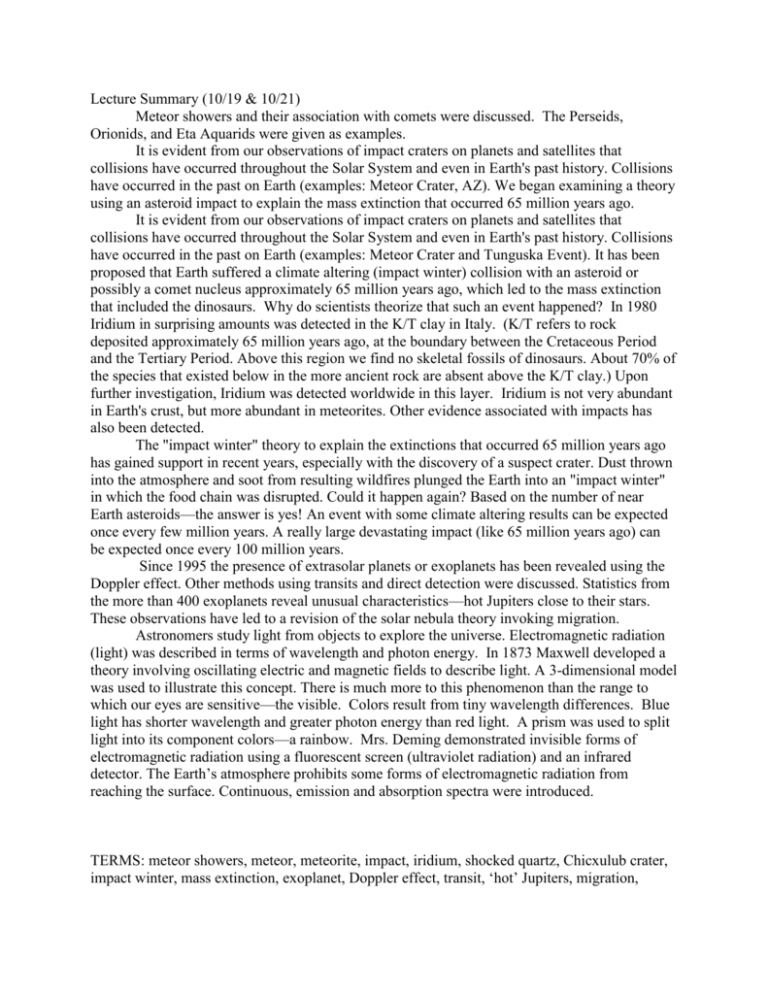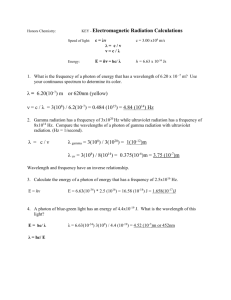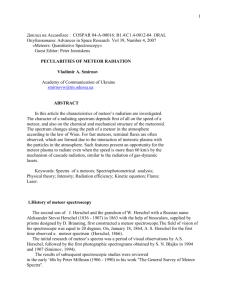It is evident from our observations of impact craters on planets and
advertisement

Lecture Summary (10/19 & 10/21) Meteor showers and their association with comets were discussed. The Perseids, Orionids, and Eta Aquarids were given as examples. It is evident from our observations of impact craters on planets and satellites that collisions have occurred throughout the Solar System and even in Earth's past history. Collisions have occurred in the past on Earth (examples: Meteor Crater, AZ). We began examining a theory using an asteroid impact to explain the mass extinction that occurred 65 million years ago. It is evident from our observations of impact craters on planets and satellites that collisions have occurred throughout the Solar System and even in Earth's past history. Collisions have occurred in the past on Earth (examples: Meteor Crater and Tunguska Event). It has been proposed that Earth suffered a climate altering (impact winter) collision with an asteroid or possibly a comet nucleus approximately 65 million years ago, which led to the mass extinction that included the dinosaurs. Why do scientists theorize that such an event happened? In 1980 Iridium in surprising amounts was detected in the K/T clay in Italy. (K/T refers to rock deposited approximately 65 million years ago, at the boundary between the Cretaceous Period and the Tertiary Period. Above this region we find no skeletal fossils of dinosaurs. About 70% of the species that existed below in the more ancient rock are absent above the K/T clay.) Upon further investigation, Iridium was detected worldwide in this layer. Iridium is not very abundant in Earth's crust, but more abundant in meteorites. Other evidence associated with impacts has also been detected. The "impact winter" theory to explain the extinctions that occurred 65 million years ago has gained support in recent years, especially with the discovery of a suspect crater. Dust thrown into the atmosphere and soot from resulting wildfires plunged the Earth into an "impact winter" in which the food chain was disrupted. Could it happen again? Based on the number of near Earth asteroids—the answer is yes! An event with some climate altering results can be expected once every few million years. A really large devastating impact (like 65 million years ago) can be expected once every 100 million years. Since 1995 the presence of extrasolar planets or exoplanets has been revealed using the Doppler effect. Other methods using transits and direct detection were discussed. Statistics from the more than 400 exoplanets reveal unusual characteristics—hot Jupiters close to their stars. These observations have led to a revision of the solar nebula theory invoking migration. Astronomers study light from objects to explore the universe. Electromagnetic radiation (light) was described in terms of wavelength and photon energy. In 1873 Maxwell developed a theory involving oscillating electric and magnetic fields to describe light. A 3-dimensional model was used to illustrate this concept. There is much more to this phenomenon than the range to which our eyes are sensitive—the visible. Colors result from tiny wavelength differences. Blue light has shorter wavelength and greater photon energy than red light. A prism was used to split light into its component colors—a rainbow. Mrs. Deming demonstrated invisible forms of electromagnetic radiation using a fluorescent screen (ultraviolet radiation) and an infrared detector. The Earth’s atmosphere prohibits some forms of electromagnetic radiation from reaching the surface. Continuous, emission and absorption spectra were introduced. TERMS: meteor showers, meteor, meteorite, impact, iridium, shocked quartz, Chicxulub crater, impact winter, mass extinction, exoplanet, Doppler effect, transit, ‘hot’ Jupiters, migration, Kepler mission, electromagnetic radiation, wavelength, photon energy, Angstrom, electromagnetic spectrum, gamma rays, x-rays, ultraviolet light, visible light, infrared radiation, radio waves, transparent. QUESTIONS: 1. Why do meteor showers occur annually? 2. What clues are found in the 65 million year old clay that led scientists to hypothesis that a mass extinction was caused by an impact? 3. How could an impact by an asteroid lead to a mass extinction on Earth? 4. Be able to discuss the three methods of detecting exoplanets. 5. Why did the study of exoplanets force a revision of the solar nebula theory? 6. Discuss electromagnetic radiation in terms of wavelength & photon energy. 7. What is the electromagnetic spectrum? 8. How does our atmosphere affect electromagnetic radiation? 9. Describe how the three types of spectra are produced. 10. What do these three types of spectra look like?








